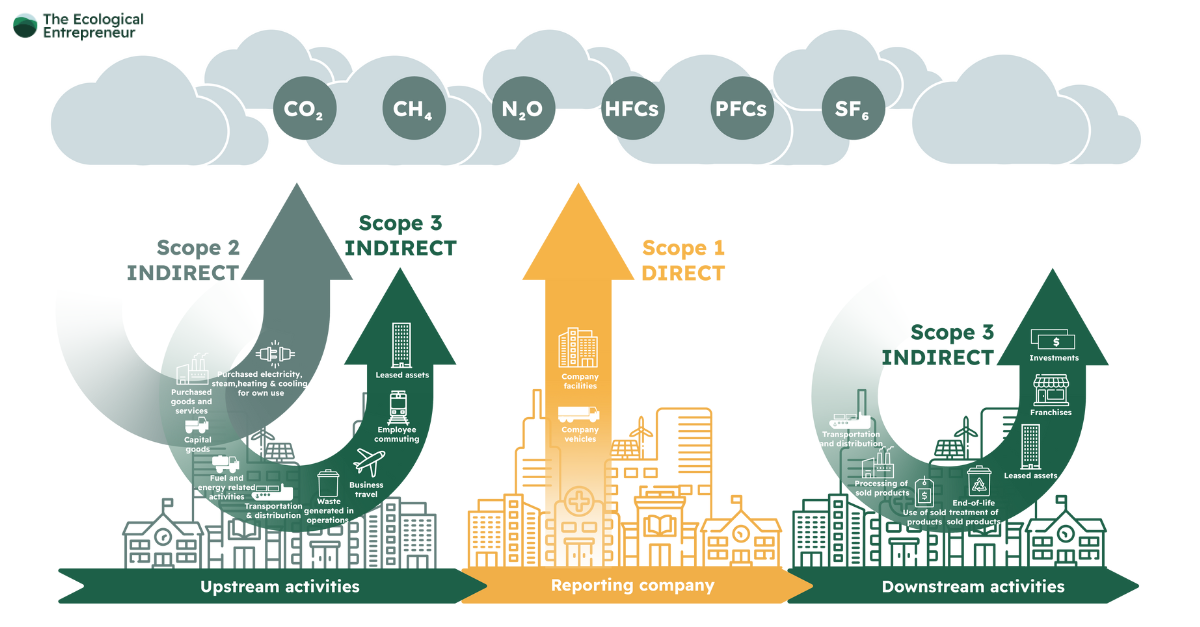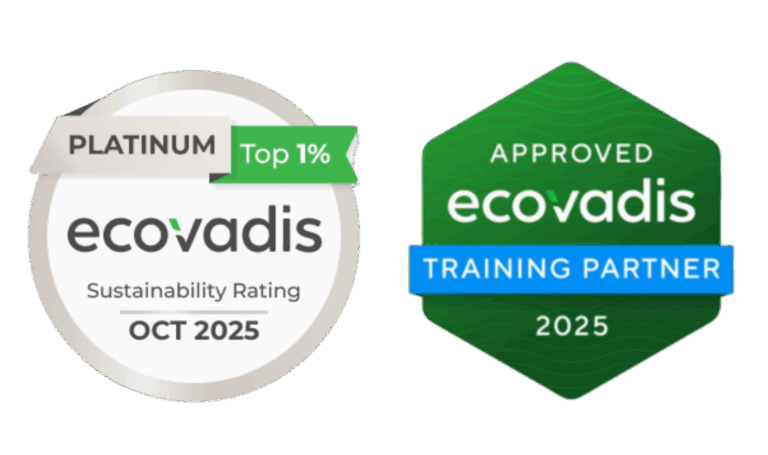SMEs and Sustainability Reporting: what you need to know for your business
- - updated 11/06/2025
Prepare for a surge of future sustainability enquiries from your banks, stakeholders and clients
In January 2025, the CSRD (Corporate Sustainability Reporting Directive) officially came into effect, initially targeting large listed corporate organisations. Shortly after, the EU’s Omnibus proposal made waves, already leading to an immediate postponement of the further roll-out of the regulation. The proposal also includes a possible reduction of the CSRD’s impact on smaller companies, excluding them from direct reporting obligations. Current proposals for the new company size-threshold range from 500 to 5000 employees, indicating a very large debate on sustainability regulation. The goal is by the end of the year to be able to ensure the EU has a clear pathway.
But make no mistake: small-to-medium companies (SMEs) will still be impacted, be it indirectly, because the directive aims for transparency throughout the entire value chain. This means that if your company supplies to a CSRD-impacted organisation, providing sustainability data to your client will be necessary.
The Belgian government has tried to protect SMEs when introducing the CSRD rules, but the impact will still be significant. CSRD-compliant companies will likely ask their suppliers (including SMEs) for a lot of data about sustainability. This could feel overwhelming because of the amount and complexity of the information needed.
There’s also a financial risk: companies that don’t take enough action to reduce their carbon footprint might face higher costs, like carbon taxes, higher loan interest rates, or have difficulty attracting investors. In other words, the question is not if SMEs will receive questions on their sustainable impact, but when. And what’s more worrying: suppliers that cannot meet these demands, are at risk of losing business.
Belgium’s protective measures for SMEs
While Belgium was late in transposing the CSRD into national law, the delay came with some upsides for SMEs. Parliament addressed concerns about the administrative burden of CSRD reporting with practical solutions:
- SMEs are only required to report based on the Voluntary Sustainability Reporting Standard for SMEs (V-SME).
- SMEs cannot be forced to provide third-party assurance on their data quality. While third-party verification remains an option, it is strictly voluntary, and large companies cannot legally demand it
The Voluntary SME Reporting Standard (VSME) explained
The VSME aims to provide voluntary sustainability reporting guidelines for non-listed small and medium-sized enterprises (SMEs) that are not directly subject to the CSRD.
Key aspects:
The VSME is not legally binding but aligns with CSRD principles. It follows the ESRS disclosure requirements, applying simplified and proportional guidelines to reduce complexity for SMEs.
Environmental reporting focus
The primary challenge for SMEs lies in gathering data for their carbon footprint through a CO₂ analysis. Under the VSME:
- Reporting on Scope 1 (direct emissions) and Scope 2 (indirect emissions from energy use) is required.
- Reporting on Scope 3 emissions (indirect emissions in the value chain) is optional but recommended for a more complete and effective carbon reduction strategy.

How to get started on your sustainability reporting
1) Identify Relevant Metrics
The first step is to determine which metrics and data points apply to your organisation. You need to evaluate which ESG topics under the VSME disclosure principles are most relevant to your business. For example, if you’re a service-based company, topics like water withdrawal or pollution may not apply to your operations.
2) Collect the Right Data
Once you’ve identified the material topics, begin gathering the necessary data. For environmental impact, this can often be quite technical. A good starting point is a CO₂ analysis, as it provides a clear overview of your company’s carbon footprint. Since this process can be complex and time-consuming, tackling it early will allow you to build momentum.
3) Leverage Sector Support
If available, reach out to your sector organisation for support. Many industry associations are stepping up to help their members by:
- Facilitating industry-wide analyses
- Providing education and tools
- Organising collective sustainable action
We’ve supported several of these initiatives and have seen clear benefits, such as:
- Simplified reporting with industry-level standards
- Reduced costs through shared resources
- Increased competitiveness within the sector
By following these three steps, you can streamline your sustainability reporting process and set a strong foundation for long-term impact.
If you want to know more about the topic of industry-level sustainability, consider reading about our collaboration with:
- BKV, the Belgian national trader organisation for moving companies
- Be-cold, the Belgian cold-chain federation
Further resources
Ready to dive deeper? Here’s a list of resources we recommend you explore:
- EFRAG (the European Financial Reporting Advisory Group) developed the VSME and provides information as well as explanatory Youtube videos on their website.
- Our online academy offers a course on how to navigate sustainability reporting, including a module on the VSME.
- If you want to look further than reporting alone, plan ahead and get an overview of the steps within your entire sustainability journey, read our blog post on the topic.
Still got some questions?
Prefer a 1-to-1 conversation? Reach out!
We bring ecology and economy together for your organisation! Choose your sustainable future.



